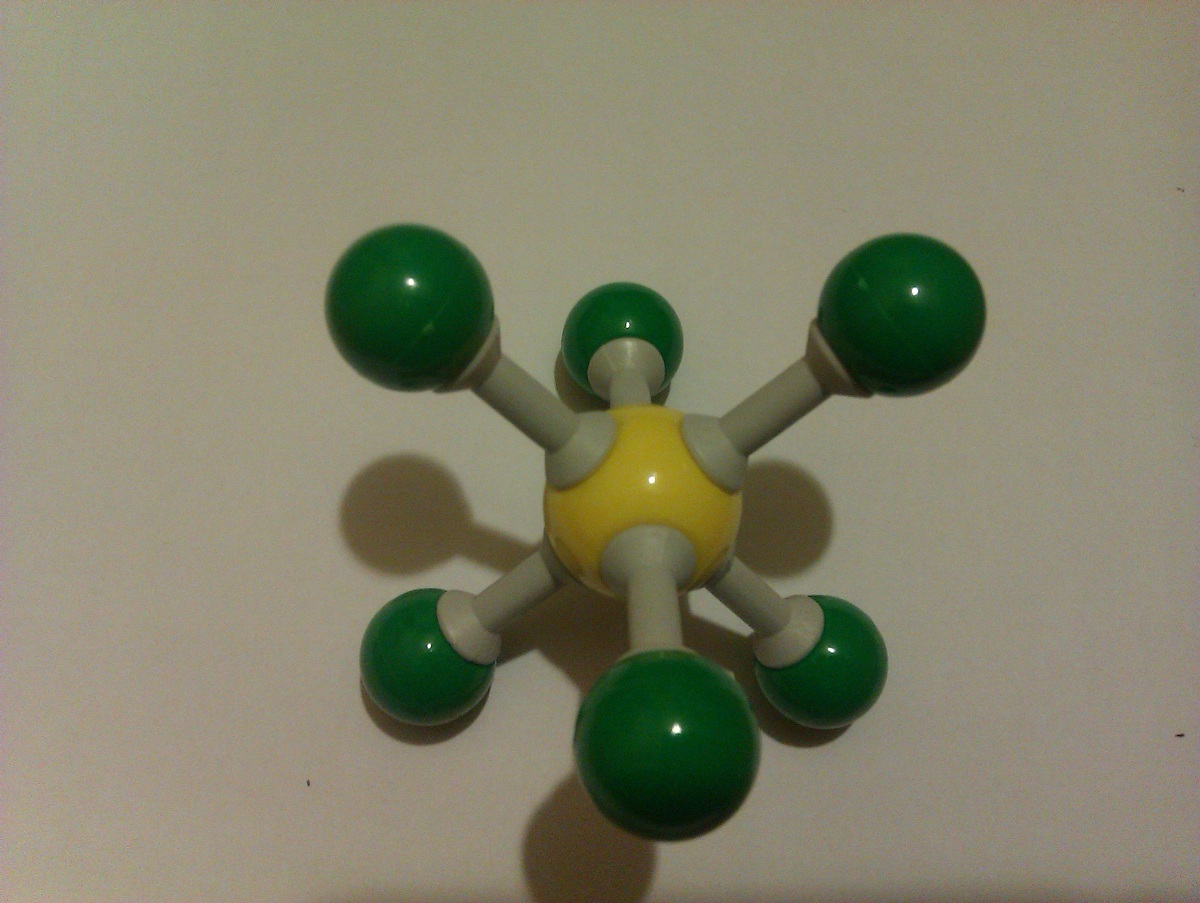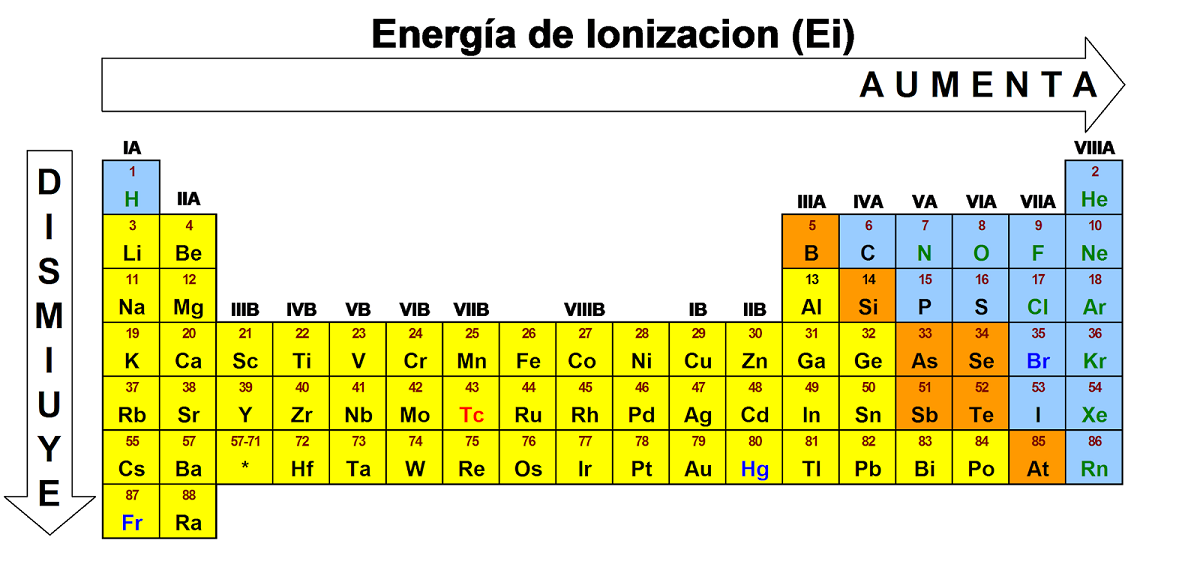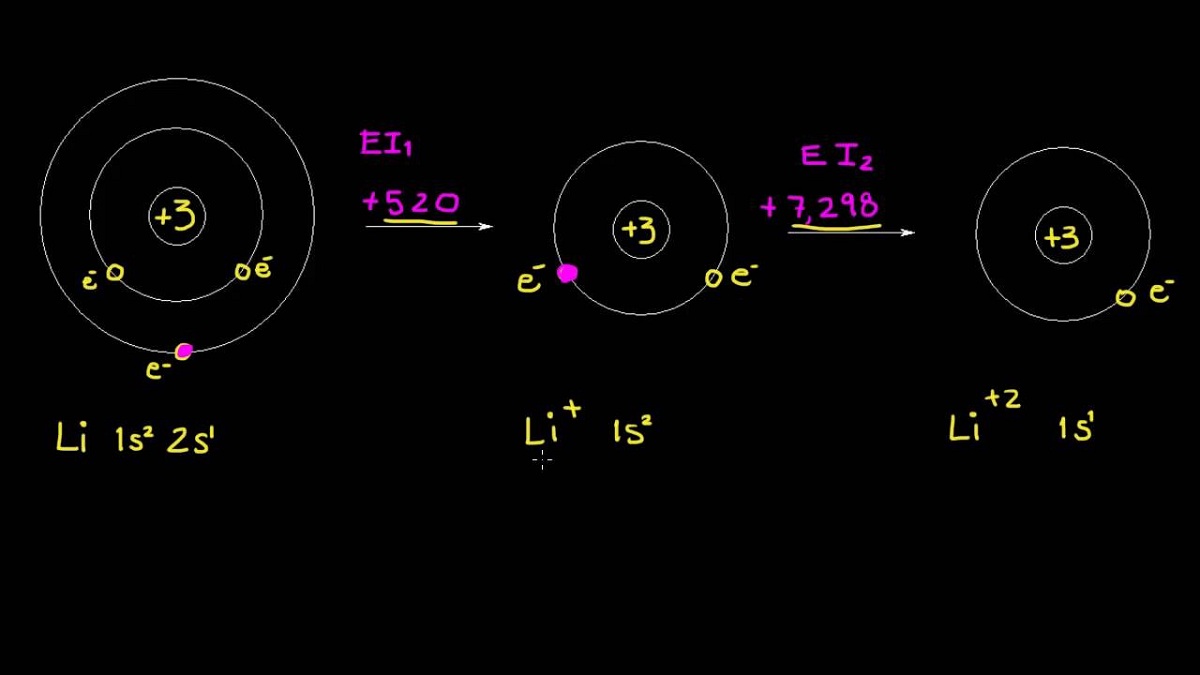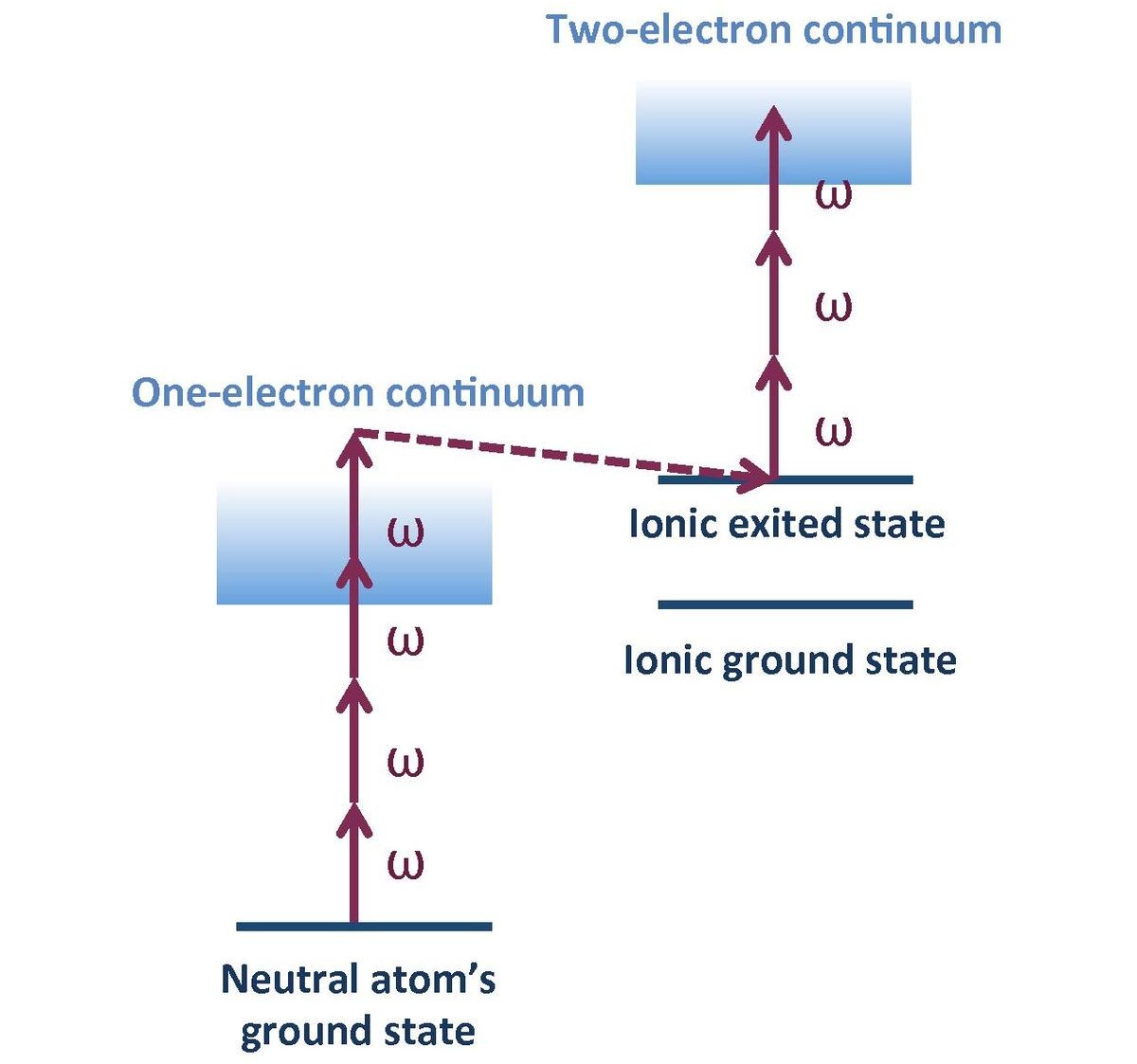
In the field of chemistry, the ionization energy. It refers to the minimum amount of energy that is required to be able to produce the detachment of an electron that was introduced into an atom in the gas phase. This energy is usually expressed in units of kilojoules per mole. It is very important in many fields of chemistry, so it is interesting to know.
Therefore, we are going to dedicate this article to tell you about all the characteristics and importance of ionization energy.
Key features

When we refer to the energy it takes to dislodge an electron from a gas phase atom We emphasize that this gaseous state is the state that is free from the influence that atoms can exert on themselves. We recall that in a material that is in a gaseous state, any type of intermolecular interaction is ruled out since the atoms are scattered from each other. The magnitude of the ionization energy is a parameter that serves to describe the force with which an electron binds to the atom of which it is a part.
There will be compounds where the electron has a higher ionization energy and it will mean that it has a higher bond strength to the atom. That is, the greater the ionization energy, the more complicated the detachment of the electron in question will be.
Ionization energy potential

When we begin to study the ionization energy of a substance we must know its ionization potential. It is not more than the minimum amount of energy that must be applied in order to cause the detachment of an electron from the outermost shell of the atom that is in its fundamental state. What's more, the load must be neutral. It should be noted that when talking about ionization potential, a term is used that each is used less. This is because the determination of this property was based on the use of an electrostatic potential to the sample to be studied.
Through the use of this electrostatic potential several things happened: on the one hand, the ionization of the chemical species took place due to electrostatic action. On the other hand, the acceleration of the process of the detachment of the electron to be removed occurred. As spectroscopic techniques began to be used to determine ionization energy, the name of potential began to be changed to that of energy. Likewise, it is known that the chemical properties of atoms are determined by the configuration of the electrons present in the outermost energy level. At these levels the electrons are farther from the nucleus and can give more information.
All this means that the ionization energy of these species that have the electrons present in the outermost energy level is directly related to the stability of the valence electrons.
Methods for determining ionization energy

There are numerous methods to determine this type of energy. The methods are mainly given by photoemission processes. Most of these processes are based on the determination of energy emitted by electrons as a consequence of the application of the photoelectric effect. One of the fastest ionization energy quantification methods is atomic spectroscopy. There is also another interesting method to calculate this type of energy, which is photoelectron spectroscopy. In this type of method, the energies with which electrons are bonded to atoms are measured.
En este sentido, A method known as ultraviolet photoelectron spectroscopy is used, which has the acronym in English UPS. This method consists of a technique that uses the excitation of atoms or molecules through the application of ultraviolet radiation. In this way, the energy with which the electrons of the optimum external energy level are bound to the nucleus of the atom can be better measured. All this is done in order to analyze the energetic transitions of the external electrons of the chemical species studied. It is also used to study the characteristics of the links that form between them.
Another way of knowing the ionization energy is by means of the X-ray photoelectronic copies spectrum method. It uses the same principle of excitation of the electrons of the outermost layer and studies the differences in the type of radiation that is made to affect the shows, the speed with which the electrons are expelled and the resolution obtained.
First and second ionization energy
In the case of atoms that have more than one electron at the outermost level, we find that the value of the energy necessary to remove the first electron from the atom is carried out through an endothermic chemical reaction. Atoms that have more than one electron are called polyelectronic atoms.. The chemical reaction is endothermic since it stops supplying energy to the atom to be able to obtain an electron added to the cation of this element. This value is known as the first ionization energy. All the elements present in the same period increase proportionally as their atomic number increases.
This means that they decrease from right to left in a period and from top to bottom within the same group existing in the periodic table. If we follow this definition, noble gases have high magnitudes in their ionization energies. On the other hand, the elements that They belong to the group of alkali and alkaline earth metals and have a lower value of this energy.
In the same way that we have described the first energy, by removing a second electron from the same atom, the second ionization energy is obtained. To calculate this energy, the same scheme is maintained and the following electrons are removed. From this information is obtained that the detachment of the electron from an atom in its ground state decreases this repulsive effect that we see existing among the remaining electrons. This property is known as nuclear charge and remains constant. A greater amount of energy is required to tear off another electron of the ionic species that has the positive charge.
I hope that with this information you can learn more about ionization energy.